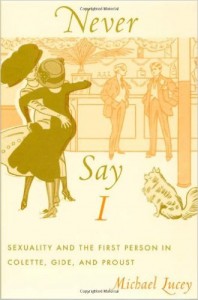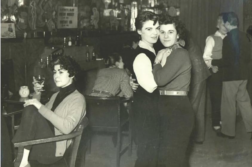 Never Say I: Sexuality and the First Person in Colette, Gide, and Proust
Never Say I: Sexuality and the First Person in Colette, Gide, and Proust
by Michael Lucey
Duke University Press. 321 pages, $23.95 (paper)
IN VOLUME I of The History of Sexuality, Michel Foucault argued that the second half of the 19th century witnessed a major shift in the way that the West defined persons who were sexually attracted to members of their own sex. Until then, the West had thought that anyone might at times be subject to such deviations from the norm, Foucault argued; but this did not specify a type of person with a fixed sexual identity. With the advent of the new “science” of sexuality, however, the homosexual emerged as a distinct “species,” to use Foucault’s provocative word. Most of what passed for medical research and legal analysis ended up portraying these new “homosexuals” in a decidedly hostile and derogatory light. This view in turn engendered responses from certain intellectuals who found themselves on the receiving end of these new explanations and diagnoses.






